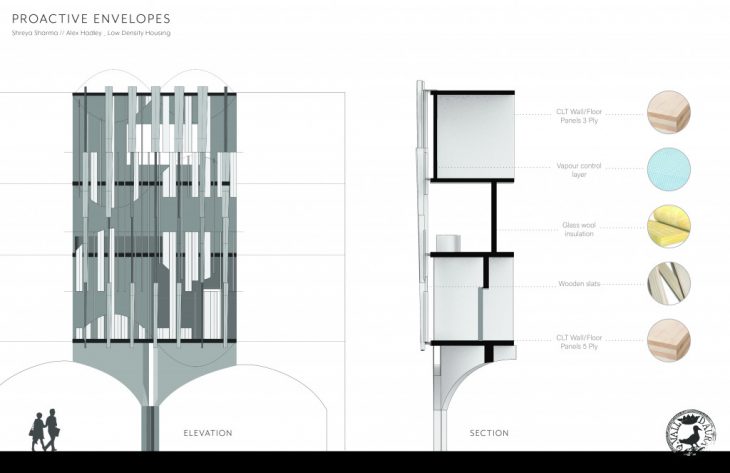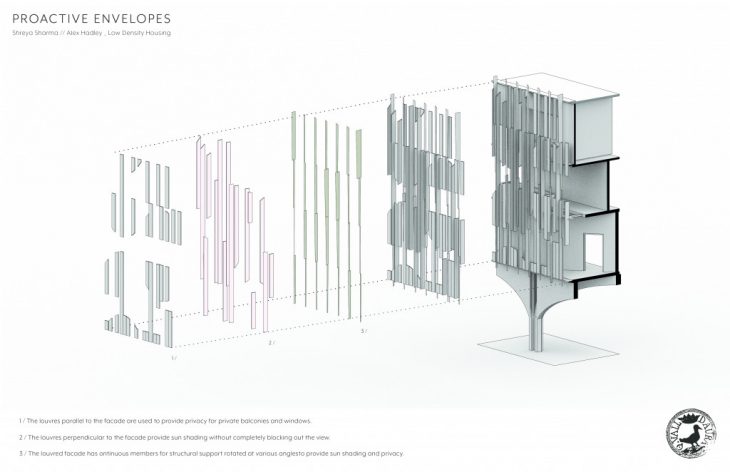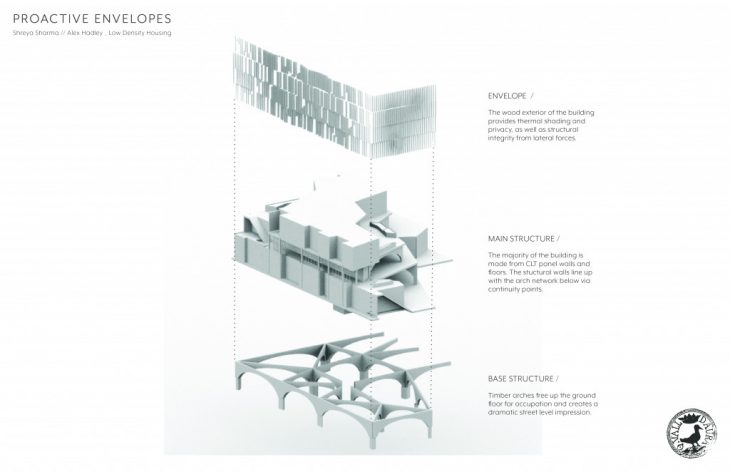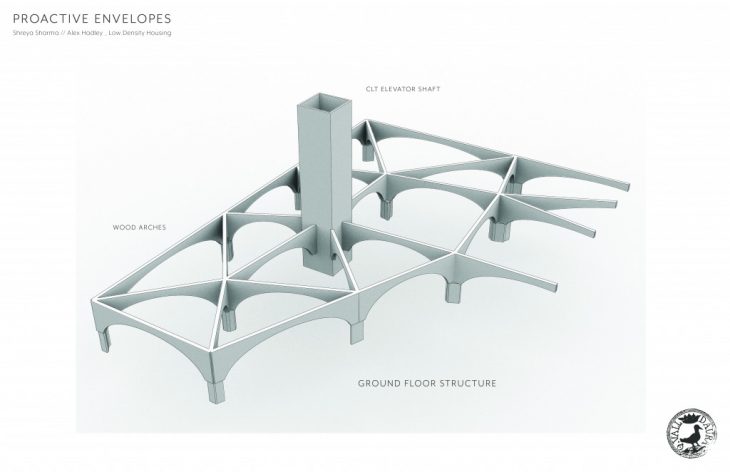During the envelope module, we focused on facades and materials that combine several functions and uses into a single cohesive design strategies. The most valuable lesson to be absorbed was how structure and skin can be fused to essentially a design and create efficiencies that integrate the natural strengths of geometry and material. By focusing less on expensive or intensively engineered facade strategies, and more on intuitive designs, we were able to think about proposals for our own project that were both efficient and unique.

Our final proposal for this module was a series of wooden slats that varied in rotation, size, and orientation. We tried to incorporate as many functions as was feasible, trying to move away from purely aesthetic considerations or purely functional ones. In the end, our scheme tried to use the inherent strengths of wood, using the orientation of the grain to produce vertical load diffusion. The patterning of the envelope tried to give a cohesive look, while adapting to the specific shading and privacy needs of the living units behind it.

Working with rhythm and layering, we were able to create a truly dynamic look for our facade without varying materials. It was important to us to produce something that could be relatively low cost, but still appear lavish and customized to the specific needs of the apartment dwellers who would interact with the skin on a daily basis.

The internal dynamics of the building produced a grid of different privacy and shading needs. The different uses included private balconies, public terraces, flat walls and public walkways. Each value was assigned a number, which then corresponded to a differing level of porosity. Taking this idea one step further, we allowed several of the panels to be operable, allowing users to alter their privacy or shading ability based on their daily prefrence.

While not part of the envelope, the ground floor structure played a big part in informing how the facade came together. The arches motivated us to not use rectilinear panels of wood, but instead cut them in curves. This cascaded into a more sophisticated pattern that, when layered with the layers behind it, created a dynamic pattern. The motion of the envelope is created using a fairly cheap and unsophisticated method of production.